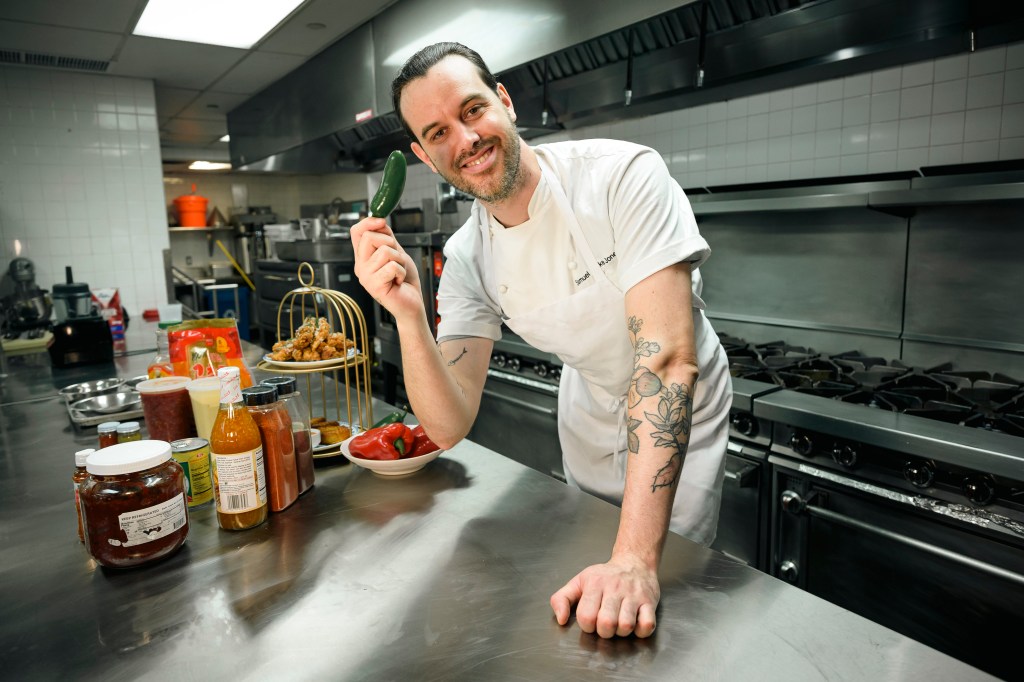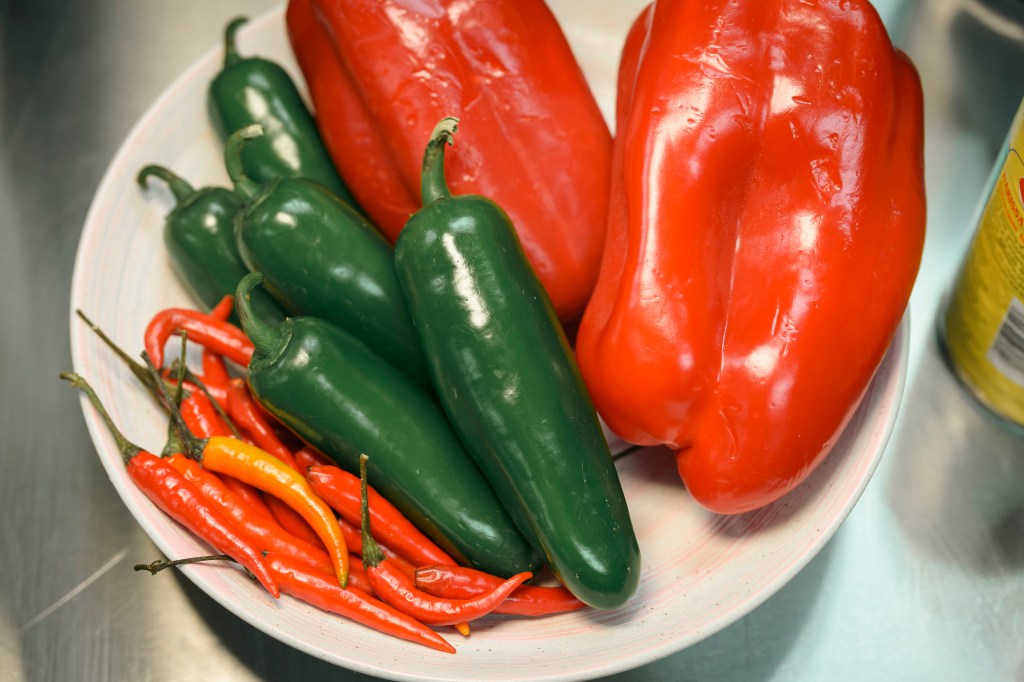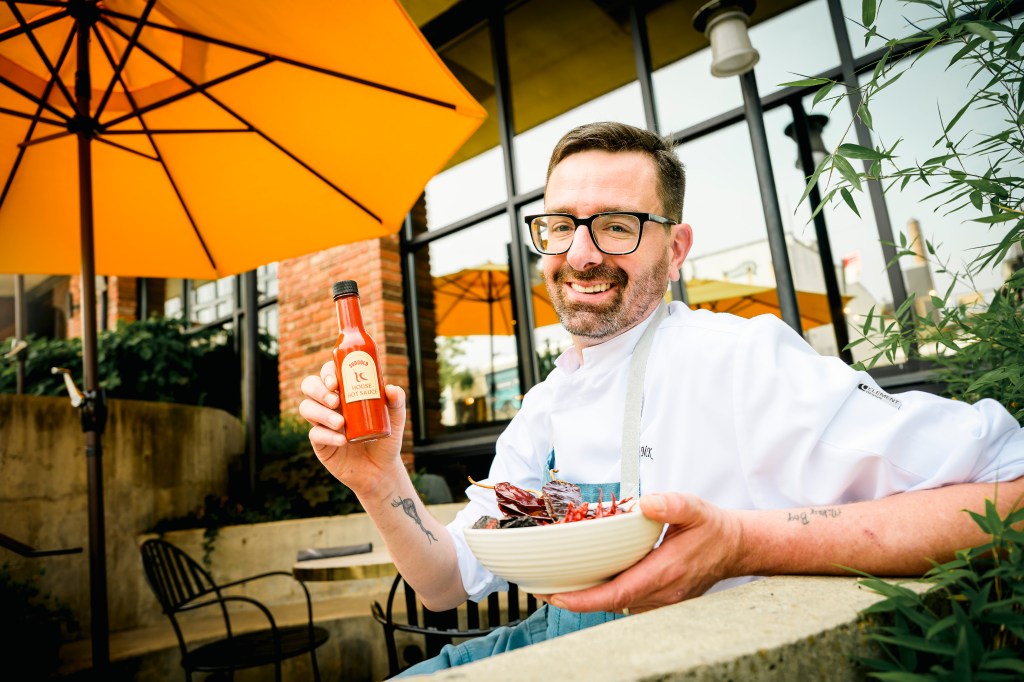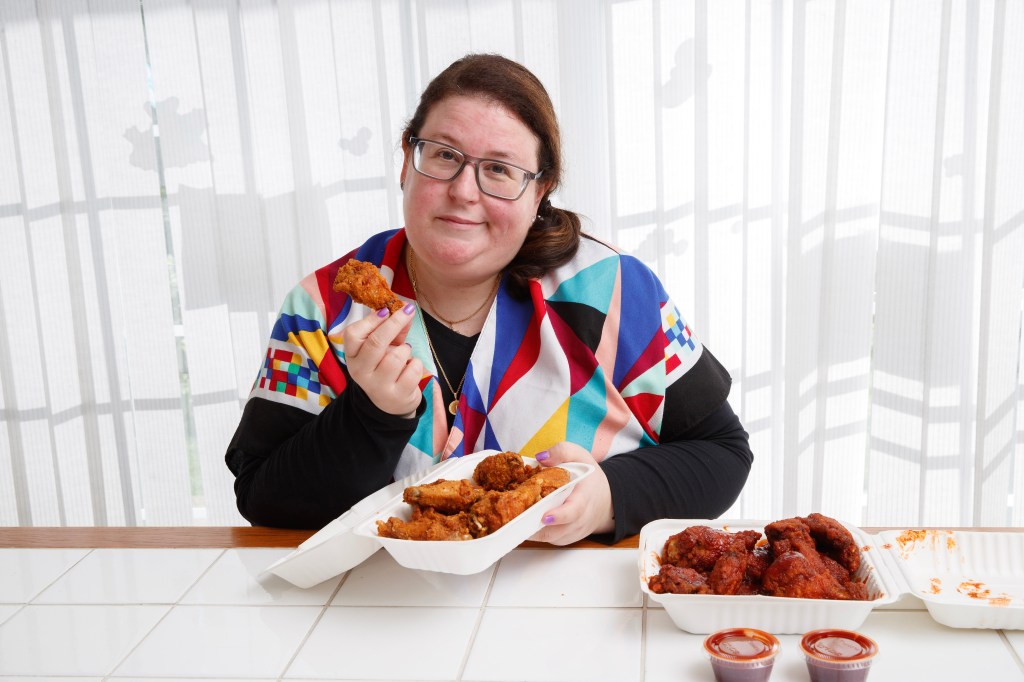For some, the spice ain’t nice.
Throughout her life, Jennifer Allerot, 53, has ordered the spiciest foods on the menu whenever she ate at a restaurant — until she developed a stomach ulcer four years ago.
“I used to devour curry, but I can’t eat it anymore,” Allerot, an accountant in Morristown, New Jersey, told The Post. “If I even get a taste of something spicy on my tongue, my stomach is, like, ‘Oh, no,’ and I have to reach for a Tums immediately to stop the pain.”

These days, it’s become a hot trend to spike the seasonings as the “heat” quotient in every restaurant dish seems to be through the roof. Case in point: Tongue-tingly meals sporting chili pepper illustrations are dominating menus, flaming hot sauces are gracing tabletops, and fast-food restaurants like Wendy’s just upped the ante with their a Cajun Crunch Chicken Sandwich.
And it’s a badge of honor for celebrities to wolf down extra-hot foods on “Hot Ones,” a YouTube show watched by millions — plus, there was last year’s sriracha shortage.
At the same time, spice-averse diners have come under fire for giving waiters the third degree about how searing a dish is.
It’s the new heat-shaming movement, but when did it become a crime to skip the sriracha?
Don’t let it get heated

Even as the spicy dish trend heats up, Allerot hasn’t quit dining out. Instead, she says the best way to avoid a Scoville heat-level dish is to befriend the waitstaff, especially when she’s eating at a new restaurant.
“I don’t grill them, exactly,” she says. “But I find that if I tell a waiter, ‘I’m really sorry, but my stomach isn’t what it used to be,’ that person is going to be really good at recommending what’s truly spicy and what isn’t.”
While most chefs are willing to dial it down, no toque wearer should ever “heat shame” a customer, says Samuel-Drake Jones, chef of Hudson VU in Hell’s Kitchen.
“I think there’s this feeling that you’re not as strong if you don’t eat spicy food,” Jones told The Post. “We’re fixated on this competition of who can eat the hottest foods, but when someone is dining at my restaurant and spending money to relax, I want to do my best to make that happen for that person.”
Peter He, the Michelin-starred chef at Meili, a Sichuan restaurant at Coda Williamsburg, says requests to adjust heat levels are routine, but heat-intolerant diners may lose the experience of tasting interesting flavors.
“A well-prepared dish is usually crafted with a specific spice or heat level in mind, so modifying it too much can affect its overall taste and texture,” he told The Post.


Shannon Guthrie, 28, says she has ordered many dishes she thought were mild — only to feel the heat immediately — and it’s the mouth-burning aftereffects that she tries to avoid.
“If I’m done with my meal, I don’t want to keep feeling it,” Guthrie, who lives on the Upper West Side and works in marketing, told The Post, adding that, despite this, she has never sent a dish back to the kitchen.
“I’ll just eat whatever it is and suffer the consequences,” says Guthrie, who says she grew up in a “spice-less” household.
“For me, this means chugging a lot of water.”
Still, Guthrie wants to keep trying new foods and asks for more customization when dining out.
“Last week, I ordered a chicken taco dish at a Mexican restaurant, and asked if they could serve the spicy sauce on the side,” she says. “The waiter was fine with it, which was good, because there is no way I would have been able to eat it otherwise.”

The goal isn’t to have diners breathing fire, chefs insist. In fact, there’s a big difference between the heat that derives from, say, chili powder and chiles themselves.
“Indian food is full of spices, such as fenugreek leaves, turmeric, chili cumin and coriander powders, but that doesn’t mean the dish is spicy,” says Abishek Sharma, the chef at three restaurants, including Madam Ji Ki Shaadi in the Village and Swagat on the Upper East Side. “We love it when customers ask us what’s in a dish because we want to people to understand the difference between something that’s hot and something that’s flavorful.”
Time your requests

The best way to tone down your taco is to mention your spice preferences when you place your order.
“That’s better than us trying to modify something after it’s been prepared or brought to the table,” He says. “Making your preferences known ahead of time also allows us to offer alternatives, like serving a side of starch to balance the heat.”
And, if you’re unfamiliar with a certain ingredient, it’s always best to Google it or ask what it is before ordering a dish, suggests Michael King, the chef at Sungold at Arlo Williamsburg, where a signature hot sauce and spicy condiments are made in-house.
“We tell our servers to ensure that guests are aware that each ingredient is there for a reason and that some ‘spicy’ ingredients add depth, not just heat,” King told The Post.

Ultimately, most chefs are happiest when you’re happy — just keep in mind that there are some dishes where it’s nonnegotiable to adjust the heat index.
“We control the amount of spice that goes into the food,” Sharma says. “Our chicken, pork and lamb vindaloo is meant to be spicy. There’s no changing it, so if you don’t like spicy, we’ll urge you to order something milder, like our butter chicken.”
In this tongue-tingling age, Allerot urges diners to build a rapport with their server.
“I’ll start by raving about how much I love the restaurant and then I lean in and give my spiel,” she says. “When I say my tastebuds won’t be happy if I order something bland, but my tummy will, they usually get it right away.”
The post Diners who hate spicy food feel ‘heat shamed’ by restaurants — why is it a crime to skip the sriracha? appeared first on New York Post.




